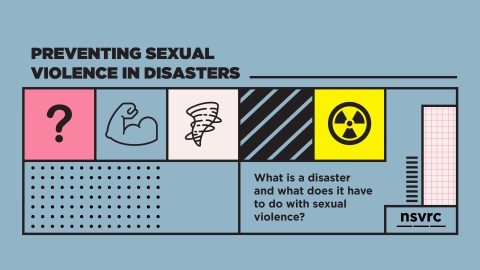- Aug 12, 2025
- Mo Lewis
Mo Lewis, NSVRC Prevention Coordinator, contemplates AI and its ethical and functional place in the sexual violence prevention movement.
- Nov 19, 2024
- Mo Lewis
NSVRC staff worked with an advisory group of organizations and leaders at local, state, and national levels supporting Black, Indigenous, Latinx, and Asian American and Pacific Islander survivors of sexual violence to create this infographic, which highlights large-scale issues that are exacerbated by disasters and provides guiding questions and inspiration for how to prevent sexua
- Aug 13, 2020
- Mo Lewis
We know that how we communicate about sexual violence and health inequities matters. This resource can help us frame the connection between oppression and sexual violence.
- Mar 23, 2020
- Mo Lewis
Our new e-learning tool helps you learn more about risk and protective factors.
- Mar 11, 2020
- Mo Lewis
Learn more about the research on social determinants of health related to sexual violence.
- Jul 30, 2019
- Mo Lewis
If we don't work with inclusive groups, we'll end up with unequal policies that may perpetuate the social norms we're trying to change.
- May 15, 2019
- Mo Lewis
Sexual violence is inextricably linked to oppression – and we won’t ever end sexual violence without ending oppression.
- Apr 30, 2019
- Mo Lewis
These two examples show how we can use our knowledge of risk and protective factors to prevent sexual violence in the real world.
- Apr 11, 2019
- Mo Lewis
Risk and protective factors are a framework of things that can increase or decrease the likelihood of sexual violence perpetration.
- Mar 30, 2018
- Mo Lewis
Evaluation is key component of successful prevention programs – it helps us know what is working, what we should change, and can help us track how we got to where we are now. Okay, I can practically hear people tuning out right now. Don’t do it, though – stay with me!
Pagination
- Page 1
- Next page









